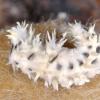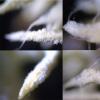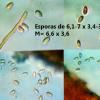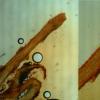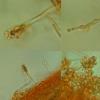
17-12-2025 18:35
 Michel Hairaud
Michel Hairaud
Bonjour à tous/Hi to everyone I am passing along

15-12-2025 15:48
 Danny Newman
Danny Newman
Melanospora cf. lagenaria on old, rotting, fallen

15-12-2025 15:54
 Johan Boonefaes
Johan Boonefaes
Unknown anamorph found on the ground in coastal sa

15-12-2025 21:11
 Hardware Tony
Hardware Tony
Small clavate hairs, negative croziers and IKI bb

15-12-2025 07:09
 Danny Newman
Danny Newman
indet. Rutstroemiaceae sp. on unk. fallen leavesMc

15-12-2025 07:05
 Danny Newman
Danny Newman
Pseudosclerococcum golindoi (det: Zotto)near Cosb

15-12-2025 11:49
 Danny Newman
Danny Newman
ITS sequences from the following two collections B

15-12-2025 12:34
 Danny Newman
Danny Newman
indet. Rhytismataceae on oak leafnear Purchase Roa
En luciernaga (Lampyridae)
Castillo Joseba,
21-06-2016 09:14
A ver si hay alguna sugerencia
Saludos
Joseba
Walter Gams,
21-06-2016 09:23
Re : En luciernaga (Lampyridae)
Apreciado Joseba,
Your last picture suggests that you have Isaria farinosa, which tends to make synnemata. Are the brown spines that you illustrate part of the fungus? Then they may be a beginnng ascostroma of the Cordyceps teleomorph, which is quite rare. Regards Walter
Your last picture suggests that you have Isaria farinosa, which tends to make synnemata. Are the brown spines that you illustrate part of the fungus? Then they may be a beginnng ascostroma of the Cordyceps teleomorph, which is quite rare. Regards Walter
Castillo Joseba,
21-06-2016 09:42
Re : En luciernaga (Lampyridae)
Hola Walter... la ultima parte de tu contestación no la entiendo ...
"Then they may be a beginnng ascostroma of the Cordyceps teleomorph, which is quite rare."
Quiza me dices que hay un Cordyceps oculto bajo la Isaria farinosa?
Saludos
Joseba
"Then they may be a beginnng ascostroma of the Cordyceps teleomorph, which is quite rare."
Quiza me dices que hay un Cordyceps oculto bajo la Isaria farinosa?
Saludos
Joseba
Walter Gams,
21-06-2016 17:41
Re : En luciernaga (Lampyridae)
Isaria farinosa is known to have a teleomorph, Cordyces memorabilis.Ceaati 1861, but it has been recorded in the last century only by Pacioni & Frizzi in 1978. Thus a fungus with 2 different morphs. Best regards Walter

